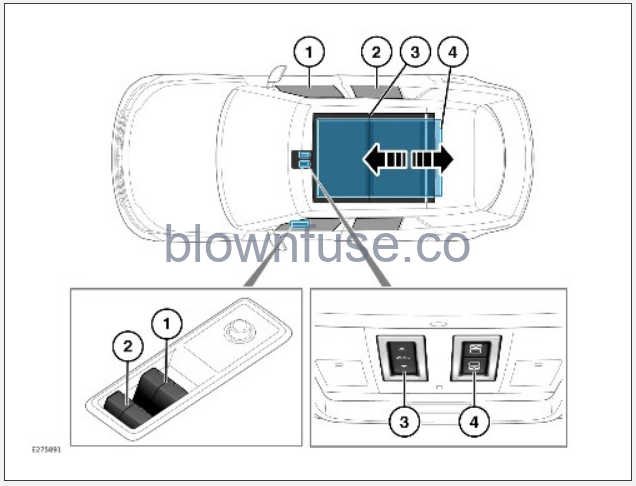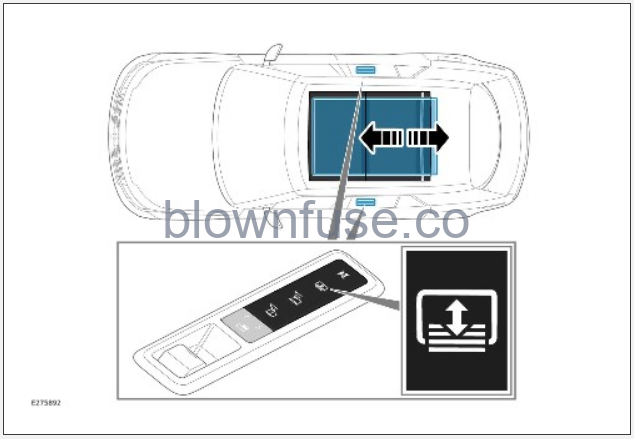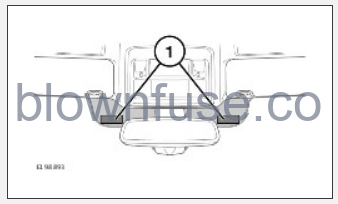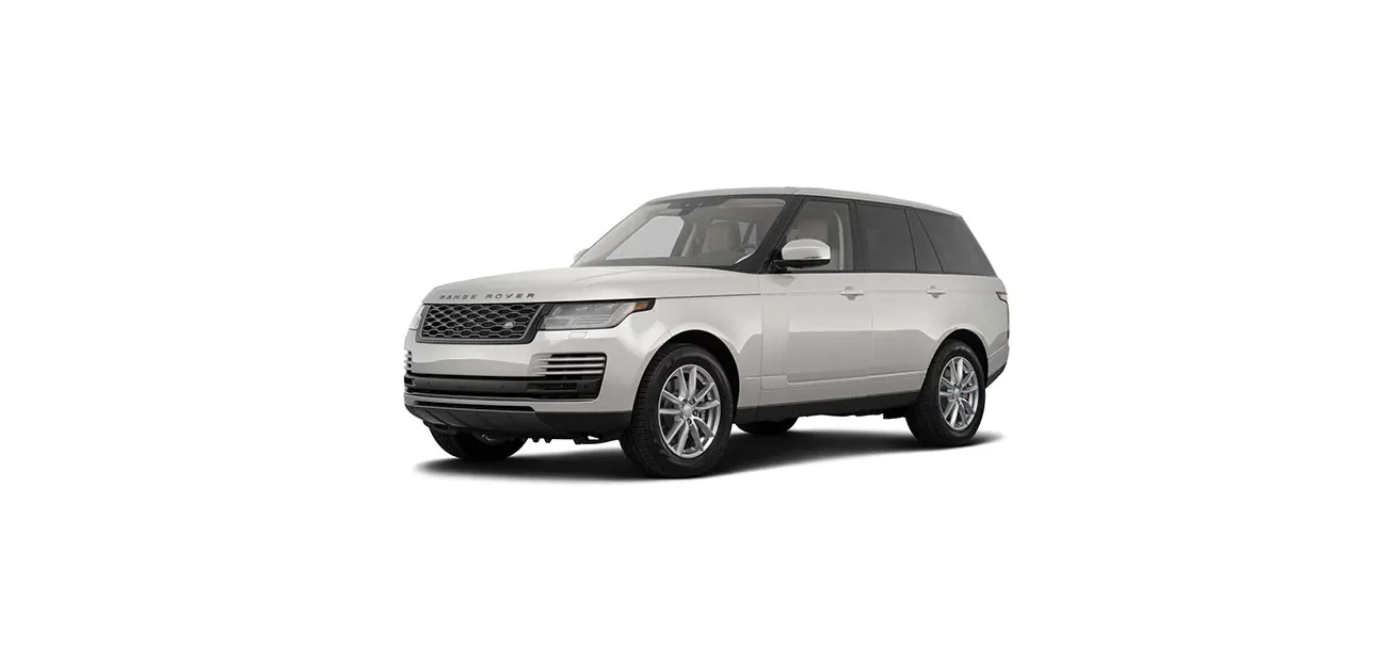2022 Land Rover New Range Rover Windows

ELECTRIC WINDOWS
If children are carried in the rear seats, the isolator switch should be used to prevent the operation of the windows. If the windows are operated by young children, there is a risk of serious injury or death.
Make sure that you remove the smart key when leaving the vehicle. This will prevent unsupervised operation of the windows and sunroof, which may result in an injury.
To prevent accidental damage, make sure that any roof rack load will not interfere with the opening of the panoramic roof.

- Window switches:
To open a window: Press lightly at the front of the switch and release.
To close a window: Pull up lightly at the front of the switch and release.
For one-touch open and close operation, press or pull firmly at the front of the switch and release.
NOTES
The windows will operate for 5 minutes after the engine is switched off, as long as none of the doors are opened. - Rear window switches.
- Panoramic roof switch:
Press lightly at the rear of the switch to tilt the roof. Once tilted, lightly press again to open the roof.
From the fully open position, press lightly at the front of the switch to close fully.
For one-touch open and close operation, press firmly at the front or rear of the switch and release.
NOTES
The panoramic roof operates for 2 minutes after the ignition is switched off, provided that a front door is not opened. - Panoramic roof blind switch:
To open the blind: Press lightly at the rear of the switch and release.
To close the blind: Press lightly at the front of the switch and release.
For one-touch open and close operation, press firmly at the front or rear of the switch and release.
NOTES -
Long Wheel Base (LWB) vehicles, fitted with standard rear seats, feature an additional roof blind switch. The switch is located on the rear face of the center console.
The panoramic roof blind can be controlled via the button located on the rear door panels.

Press the button to open the roof blind. Press the button for a second time to close the roof blind.
The rear door panel’s roof blind button triggers an opening movement unless the blind is fully open.
Pressing the roof blind button when the roof blind is moving will stop the roof blind in its current position.
For information on isolating the rear windows, refer to child safety locks. See CHILD SAFETY LOCKS.
The automatic operation of the roof blind can be adjusted via the climate settings screen on the touchscreen display.
When the feature is selected and the doors are locked, the roof blind closes automatically. When the engine is running, the roof blind returns to the previous open position.
SIDE WINDOW BLINDS
Before operating the side window blinds, make sure that no objects or parts of the body are in a position to obstruct its operation. Failure to do so may result in damage to the operating mechanism.
Before operating the side window blinds, it is important to note the following:
- The rear window buttons also operate the respective side window blind.
- A side window blind will only operate if the window is fully closed.
- The side window blinds can only be fully raised or fully lowered. There is no part-way position.
- The side window blinds feature an anti-trap function. If movement is restricted while being raised, the side window blind will stop and return to the lowered position.
- The side window blinds also feature an anti-play function. If a side window blind is operated repeatedly in a short space of time, the operation will be inhibited for approximately 60 seconds.
To raise the side window blind, pull and release the rear window button.
To lower the side window blind, push and release the rear window button.
The side window blinds will operate for 5 minutes after the engine has been switched off, provided the windows are fully closed.
ANTI-TRAP PROTECTION
Closing a window, panoramic roof or roof blind onto any part of the body can result in serious injury.
Before closing a window or the panoramic roof, make sure that no occupants have any part of their body in a position where it could be trapped. Even with an anti-trap system, death or serious injury could occur.
The anti-trap mechanism does not operate when closing the panoramic roof from the tilted position. The panoramic roof can cause serious injury should a body part become trapped. Always make sure that the panoramic roof is free from obstructions before closing.
Anti-trap protection will stop window or panoramic roof movement if an obstruction or resistance is detected. Check the window or panoramic roof and its aperture, and remove any obstructions (e.g., ice, etc.).
If it is still necessary to raise the window or close the panoramic roof, the override procedure is as follows:
- Attempt to close the window or panoramic roof. Anti-trap prevents closure and lowers the window or opens the panoramic roof slightly.
- Within 10 seconds, attempt to raise the window or close the panoramic roof again. Anti-trap prevents closure and lowers the window or opens the panoramic roof slightly.
- Attempt to close the window or panoramic roof for the third time. Hold the button in the close position. Hold until closed.
If this procedure fails to remove the blockage, the window operation may need to be reset. See WINDOW RESET.
The panoramic roof’s anti-trap mechanism works differently and does not require a reset if activated. See PANORAMIC ROOF BLIND RESET.
SOLAR ATTENUATING GLASS

The solar attenuating glass windshield filters sunlight passing through a special laminated layer.
Electronic devices, such as toll road payment tags or Radio Frequency (RF) ID tags, can be attached at the indicated locations. The locations are on the inside of the windshield. If the tags are located at any other part of a solar attenuating windshield, the electronic scanners may not recognize them.
The optimal fixing location is at the top of the windshield, as shown in (1), close to the interior rear-view mirror.
The electronic device should be in the size-appropriate location on the driver’s side of the windshield.
Transponders, mounted on the front license mount plinth, can be used as an alternative, dependent on the market and availability.

